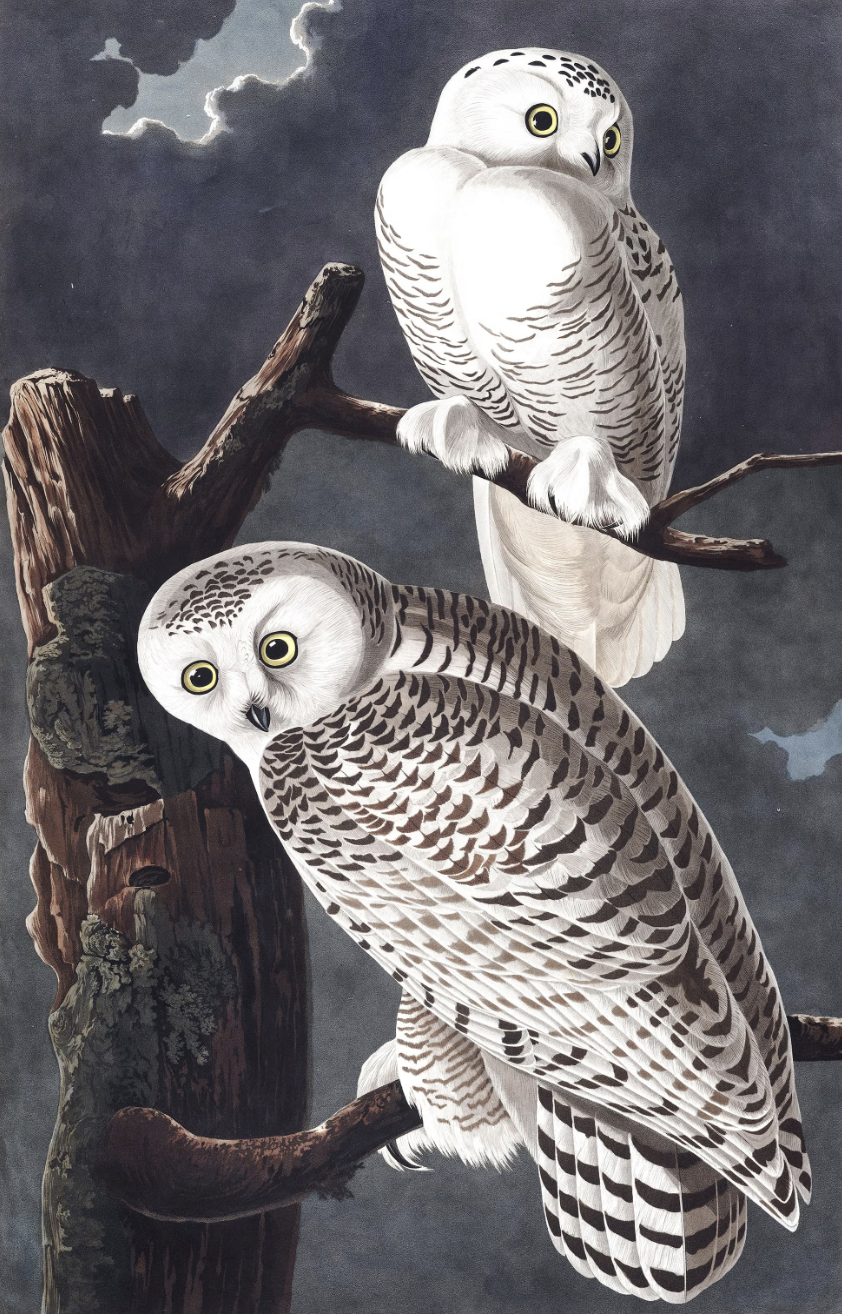The Audubon Society
Birds, Nature, and Legacy: How the Audubon Society Took Flight
*All images courtesy of the John James Audubon Center at Mill Grove, Montgomery County Audubon Collection, and Zebra Publishing
By Heather Bolen
For generations, the natural world—from songbirds to migrations—has captivated people, inspiring the Audubon Society’s mission to protect birdlife. Lately, I’ve felt this pull too. From my twelfth-floor apartment in NYC, I mostly see rock pigeons, but every spring, a crowd gathers near my building, watching a pair of peregrine falcons that nest in a nearby church tower. Among 25 breeding pairs in NYC, these remarkable birds dive at speeds up to 240 mph—the fastest animal on Earth. Right there, on the Upper West Side of Manhattan! Witnessing them up close has deepened my appreciation for conservation efforts like those of the Audubon Society, safeguarding birds and their habitats for over a century.
The Inspiration: John James Audubon
The Audubon Society takes its name from John James Audubon, a 19th-century naturalist whose monumental Birds of America ignited public fascination with birdlife and laid an early foundation for conservation. Born in Haiti and raised in France, Audubon’s work combined meticulous study with captivating art. However, his legacy is complex—he owned enslaved people and often used Indigenous knowledge without credit, reflecting the era’s injustices. Today, the Audubon Society honors his contributions while fostering a more inclusive approach to conservation.
The Birth of a Movement: The Early Days of the Audubon Society
The Audubon Society began in the late 19th century when bird populations were threatened by habitat loss, hunting, and the fashion for feathered hats. Led by women like Harriet Hemenway and Minna Hall, who rallied Boston socialites to reject feathered hats, the movement spread, resulting in the first Audubon chapter in 1896. Soon, other states followed, and a unified National Audubon Society emerged, advocating for bird protection through education and legislation. Their early victories included the 1900 Lacey Act, banning wildlife trafficking, and the 1918 Migratory Bird Treaty Act, protecting migratory species—marking a new era in American conservation.
Expanding Mission: From Birds to Ecosystems
While its roots lie in bird protection, the Audubon Society’s mission has evolved over the years to encompass broader environmental concerns. The organization recognized that protecting birds also meant safeguarding the ecosystems they depend on. With a shift toward ecosystem conservation, the Audubon Society expanded its efforts to include preserving wetlands, forests, and grasslands, all of which are vital habitats for various wildlife. Their emphasis on ecosystem health also aligns with issues like climate change, which has become one of the most significant threats to bird species globally.
The Audubon Society Today: A Leader in Conservation
Today, the Audubon Society operates as a network of more than 500 local chapters, inspiring and educating communities about environmental stewardship. Their programs span from bird-friendly urban planning to initiatives to protect vital habitats across the Americas. One of the Society’s most notable modern efforts is its focus on climate change, as warming temperatures, changing seasons, and shifting ecosystems pose new threats to birds and their habitats. Through research, advocacy, and community outreach, the Audubon Society continues to act as a champion for birds and biodiversity at large.
A Lasting Legacy for the Natural World
The Audubon Society began with a simple goal: to protect birds. Over time, it grew into a global conservation movement, advocating for wildlife and preserving natural habitats for future generations—a legacy I feel when watching the peregrine falcons near my home.
Audubon’s legacy also lives on in two exquisite oversized editions of his work: Audubon's Birds of America: The Baby Elephant Folio and Audubon's Aviary: The Original Watercolors for The Birds of America. The Baby Elephant Folio showcases 435 life-size engravings from Birds of America, reprinted with modern species classifications and descriptive captions. Audubon’s Aviary displays his original watercolors, offering fresh insights into the masterpieces and his creative process, enriched with quotes from his writings.
Affiliate Disclosure: When you make a purchase through links on this site, we may earn a commission at no extra cost to you. Each book is thoughtfully chosen, reflecting our genuine enthusiasm for sharing these titles. Thank you for supporting our small business.















